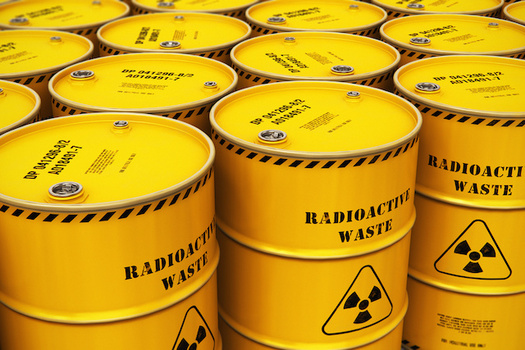“Diane D’Arrigo, radioactive waste project director for the Nuclear Information and Resource Service, says the change would allow the industry to dispose of any waste other than irradiated fuel at landfills. That includes concrete, soil, clothing or any material where radiation still exists.”
ARTICLE FROM publicnewsservice.org

BOISE, Idaho — The Nuclear Regulatory Commission may change its rules to allow the nuclear industry to dump some of its waste in landfills.
Opponents say the change poses a public health risk and would allow waste to go unmonitored.
The proposal would enable the NRC to reinterpret the meaning of low-level radioactive waste so that it could be accepted at dumps and hazardous waste sites, rather than regulated storage facilities.
Daniel Hirsch is president of Committee to Bridge the Gap, an organization that focuses on nuclear safety. He says a dump site in Idaho would benefit from this change.
“In addition to the waste potentially going to everyone’s municipal landfill, the real focus of this is to allow the U.S. Ecology facility in Idaho to — without a license — start taking the material that up until today you’re required to have a license for,” he points out.
On Friday, the public comment period was extended from April 20 to July 20. But Hirsch and other opponents say the COVID-19 pandemic isn’t allowing for proper scrutiny of the rule. They want it picked back up six months after the coronavirus crisis is over.
Diane D’Arrigo, radioactive waste project director for the Nuclear Information and Resource Service, says the change would allow the industry to dispose of any waste other than irradiated fuel at landfills. That includes concrete, soil, clothing or any material where radiation still exists. The limit would be 25 millirem per year, a unit of absorbed radiation.
D’Arrigo says the change poses a big public health risk.
“There’s some so-called low-level waste that could give a lethal dose in 15 minutes if you’re exposed unshielded,”
she point out. “So ‘low level’ has been a misnomer for a very long time.”
Terry Lodge, an attorney who works on nuclear safety issues, says the industry has been working for this change for decades because of the cost of disposing waste at radioactive-storage facilities.
“The utilities build the expense of disposing of the waste into their electrical charges to us customers,” he points out. “So it’s not as though they don’t have the money. But there is a relentless search for quick and dirty solutions.”
